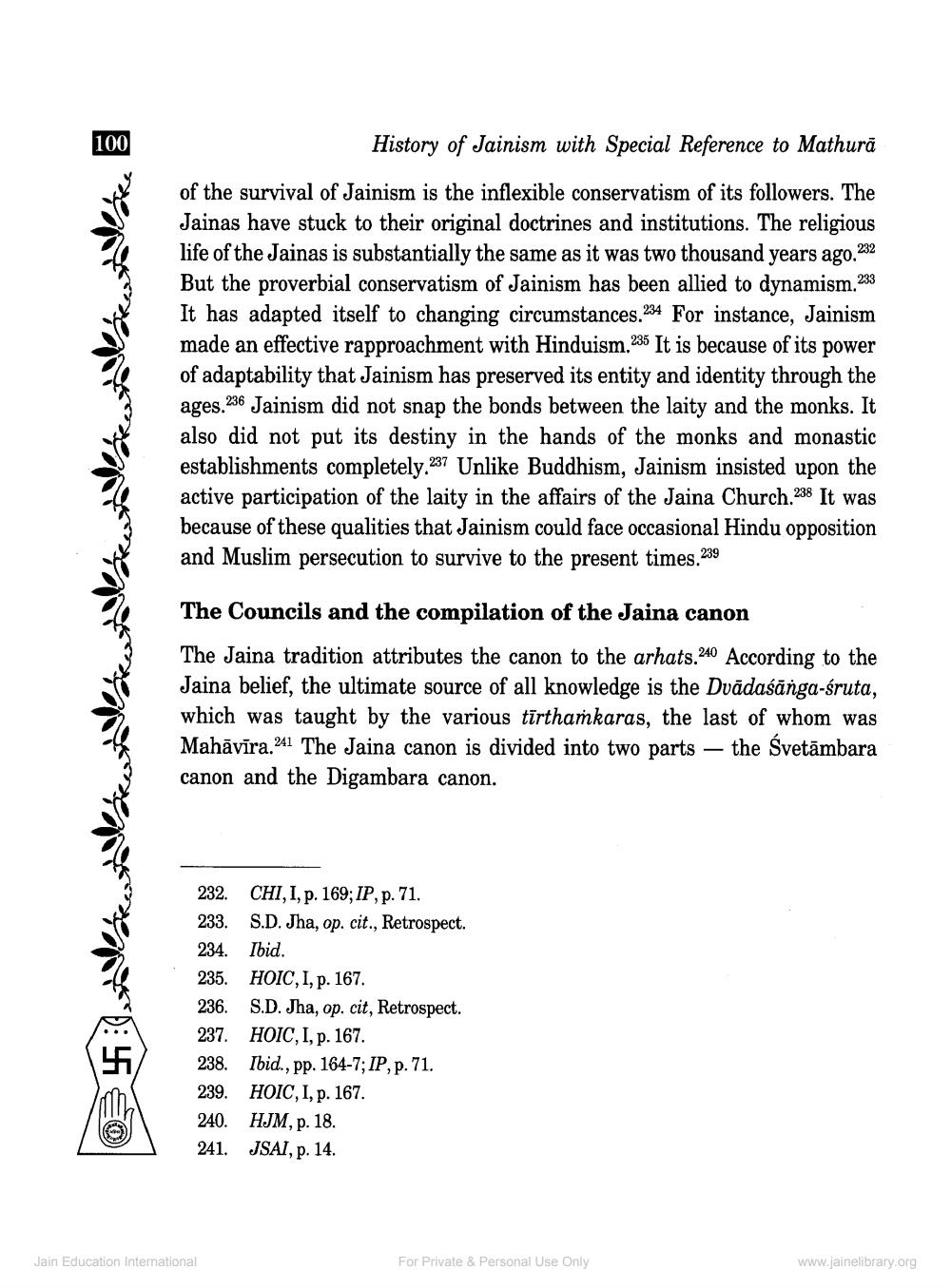________________
100
History of Jainism with Special Reference to Mathurā
of the survival of Jainism is the inflexible conservatism of its followers. The Jainas have stuck to their original doctrines and institutions. The religious life of the Jainas is substantially the same as it was two thousand years ago.232 But the proverbial conservatism of Jainism has been allied to dynamism.233 It has adapted itself to changing circumstances.234 For instance, Jainism made an effective rapproachment with Hinduism.235 It is because of its power of adaptability that Jainism has preserved its entity and identity through the ages.236 Jainism did not snap the bonds between the laity and the monks. It also did not put its destiny in the hands of the monks and monastic establishments completely.237 Unlike Buddhism, Jainism insisted upon the active participation of the laity in the affairs of the Jaina Church.238 It was because of these qualities that Jainism could face occasional Hindu opposition and Muslim persecution to survive to the present times.239
The Councils and the compilation of the Jaina canon
The Jaina tradition attributes the canon to the arhats.240 According to the Jaina belief, the ultimate source of all knowledge is the Dvādaśanga-śruta, which was taught by the various tīrthamkaras, the last of whom was Mahāvīra.241 The Jaina canon is divided into two parts — the Svetāmbara canon and the Digambara canon.
232. CHI, I, p. 169; IP, p. 71. 233. S.D. Jha, op. cit., Retrospect. 234. Ibid. 235. HOIC, I, p. 167. 236. S.D. Jha, op. cit, Retrospect. 237. HOIC, I, p. 167. 238. Ibid., pp. 164-7; IP, p. 71. 239. HOIC, I, p. 167. 240. HJM, p. 18. 241. JSAI, p. 14.
Jain Education International
For Private & Personal Use Only
www.jainelibrary.org




